Stellar Converter for EDB converts Exchange database (EDB) files and exports the mailboxes directly to Microsoft 365.
The steps to export data from the EDB file to Microsoft 365 using Stellar Converter for EDB software are given below.
Before You Begin
- You need a Microsoft Office 365 user account.
- You need to download and install Stellar Converter for EDB software.
To convert EDB file, follow these steps:
- Open EDB to PST Converter software. From the Home screen, click Offline EDB.
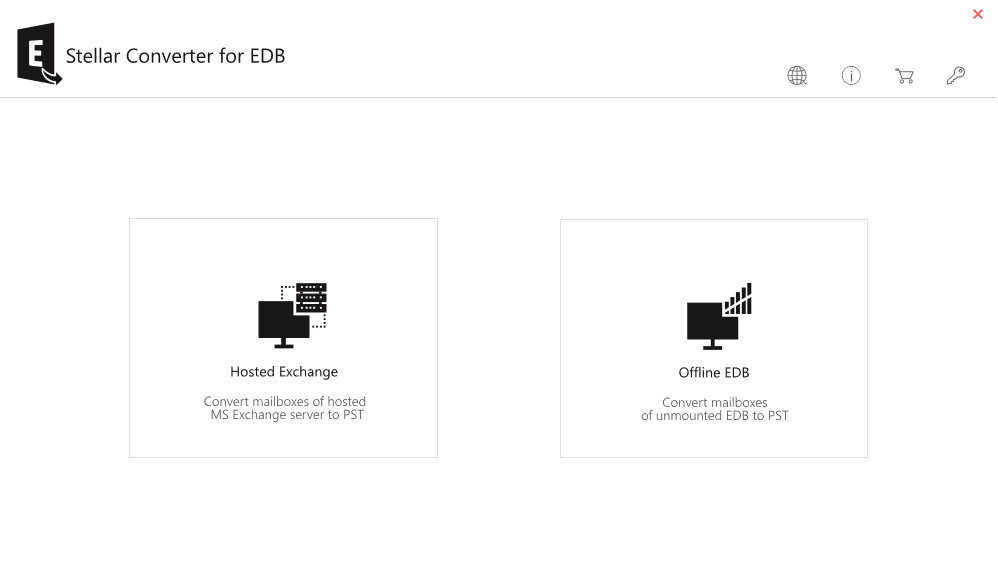
- The Select File window opens. Click Browse if the EDB file location is known. The software displays the selected EDB file in the Selected File Path.
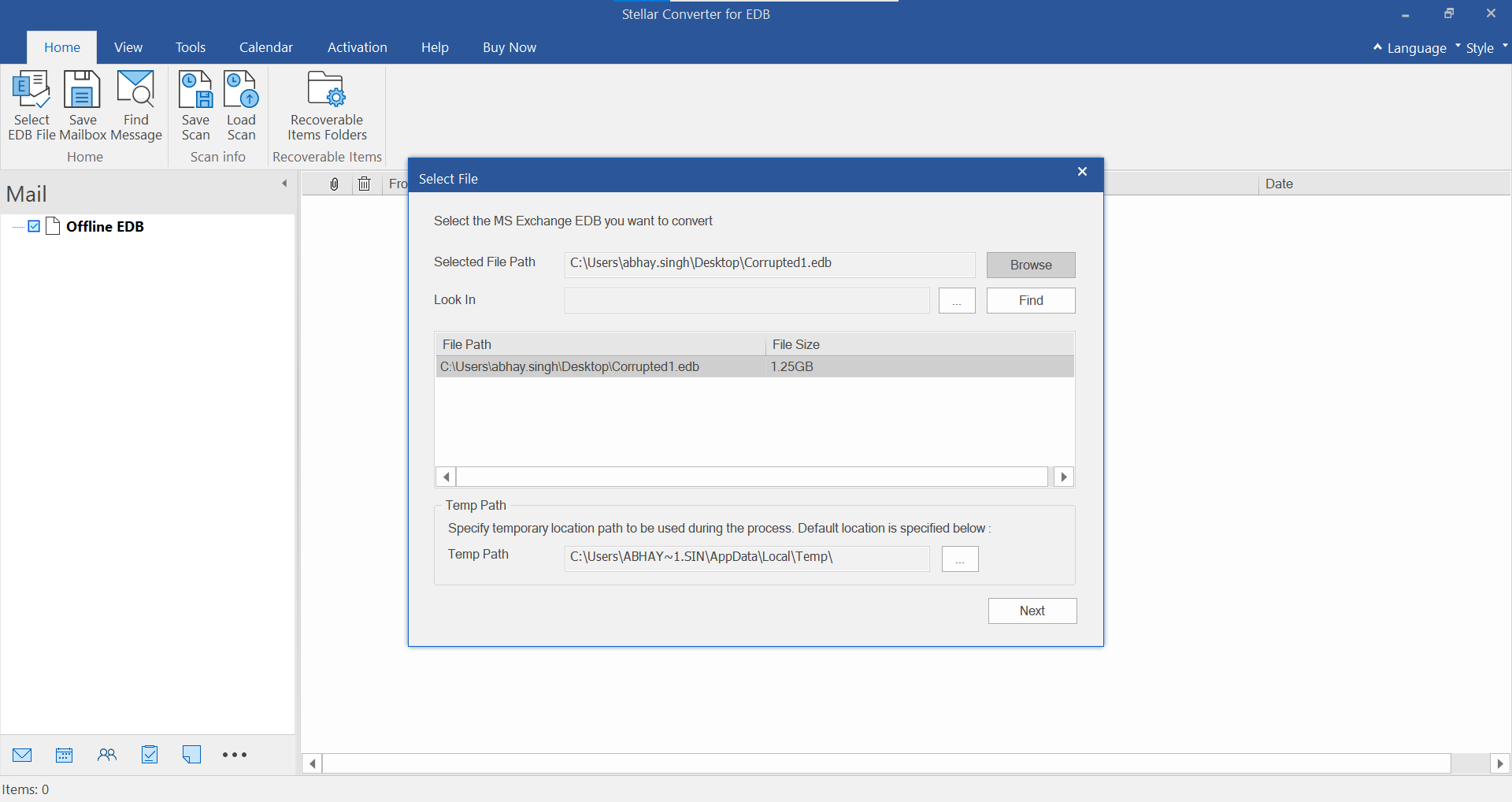
- Alternatively, click Find (if the location is not known) to locate the Exchange database file in a drive, folder, or subfolder.
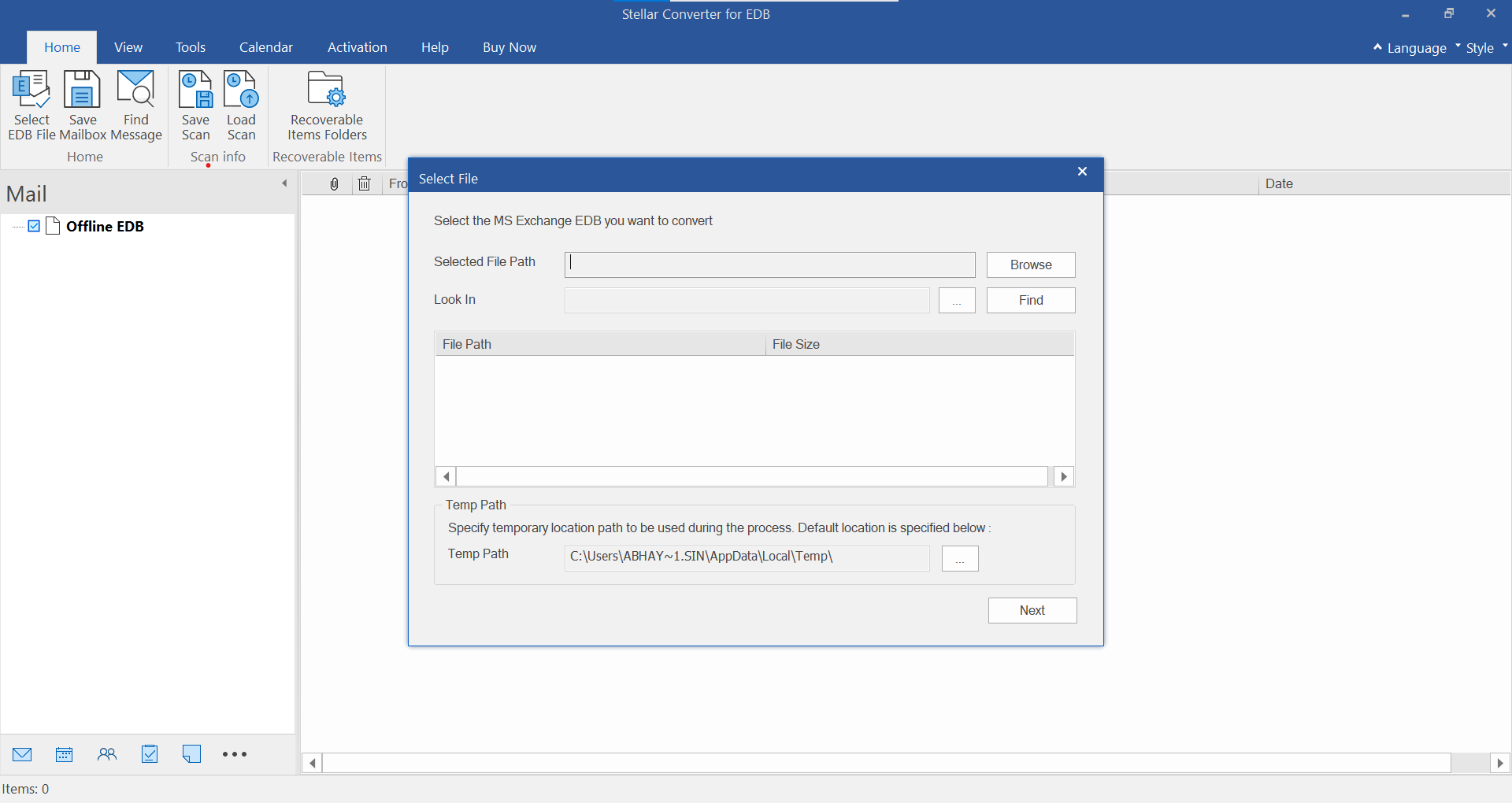
- Click Next to initiate the EDB file conversion process.
- The software scans the EDB file and displays a preview of the converted file. The preview option helps users to verify mailbox content before exporting to Microsoft 365.
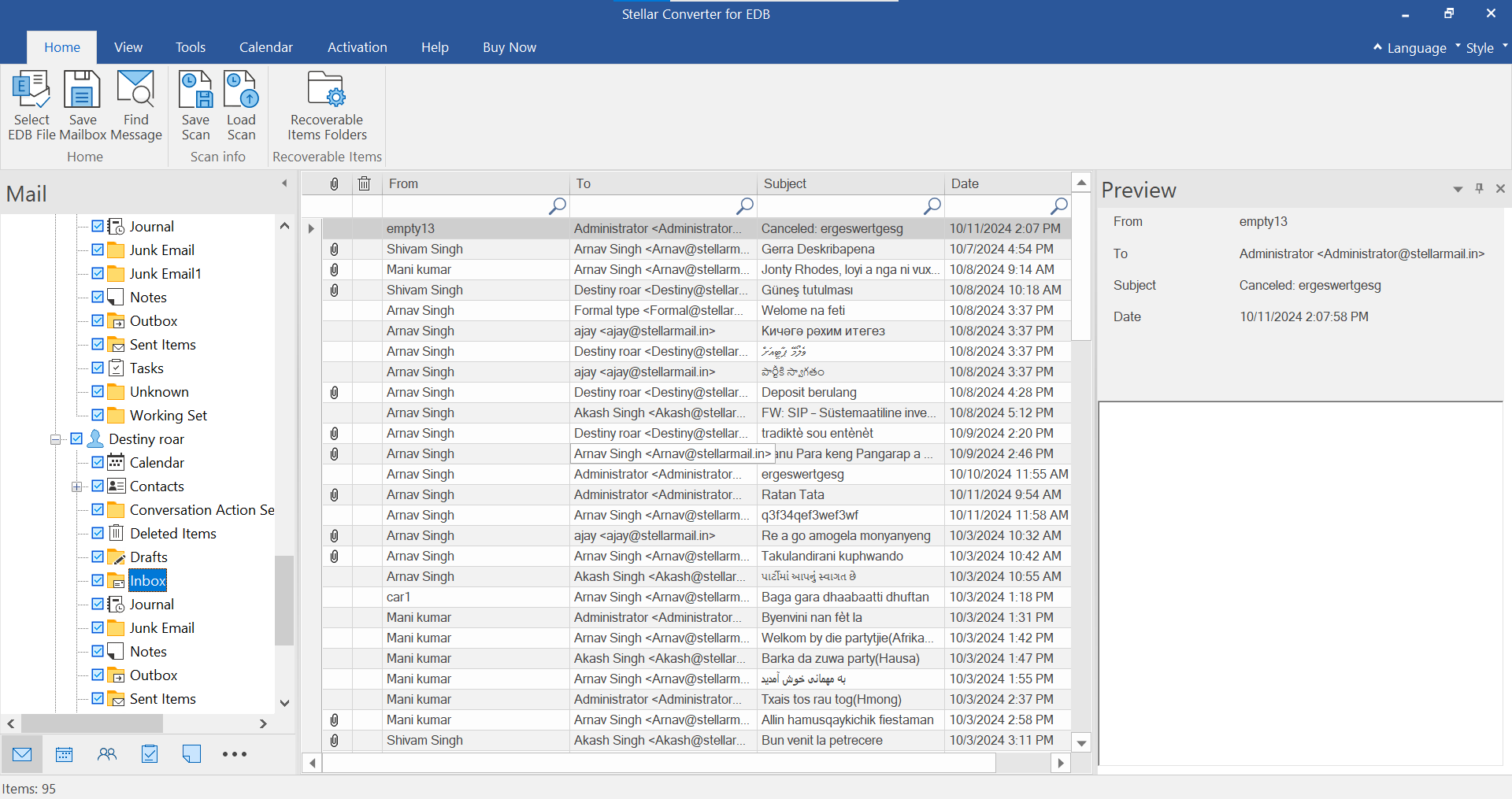
To export multiple mailboxes to Office 365, follow these steps:
- Select the mailboxes from the left pane of the preview window that you want to export to Microsoft 365 and then click Save from the Home menu.
- From Save As dialog box, click the Microsoft 365 icon and click Next.
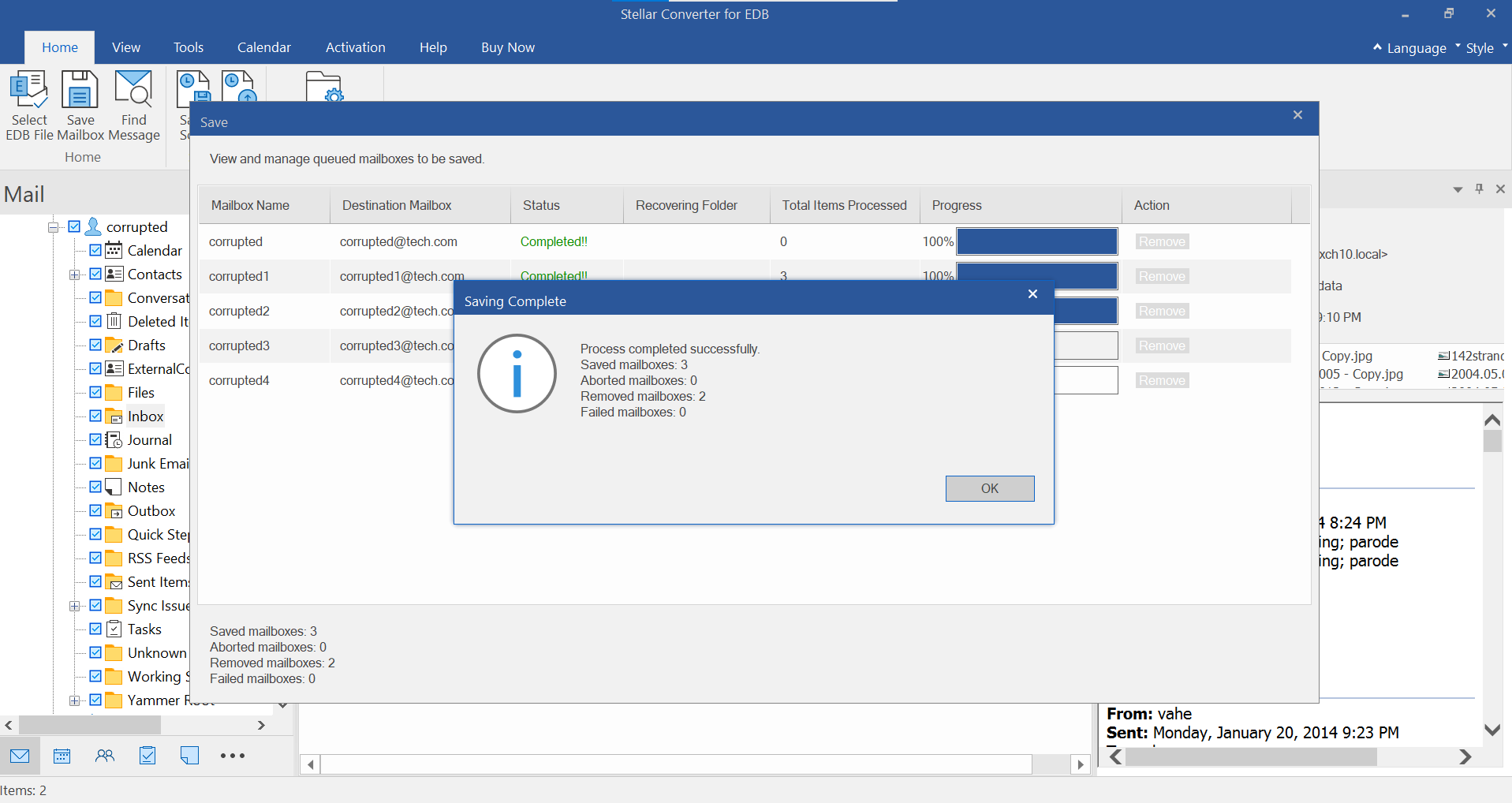
- A pop-up window to Enter Login Credentials will appear. Choose the configured Profile Name Then click OK.
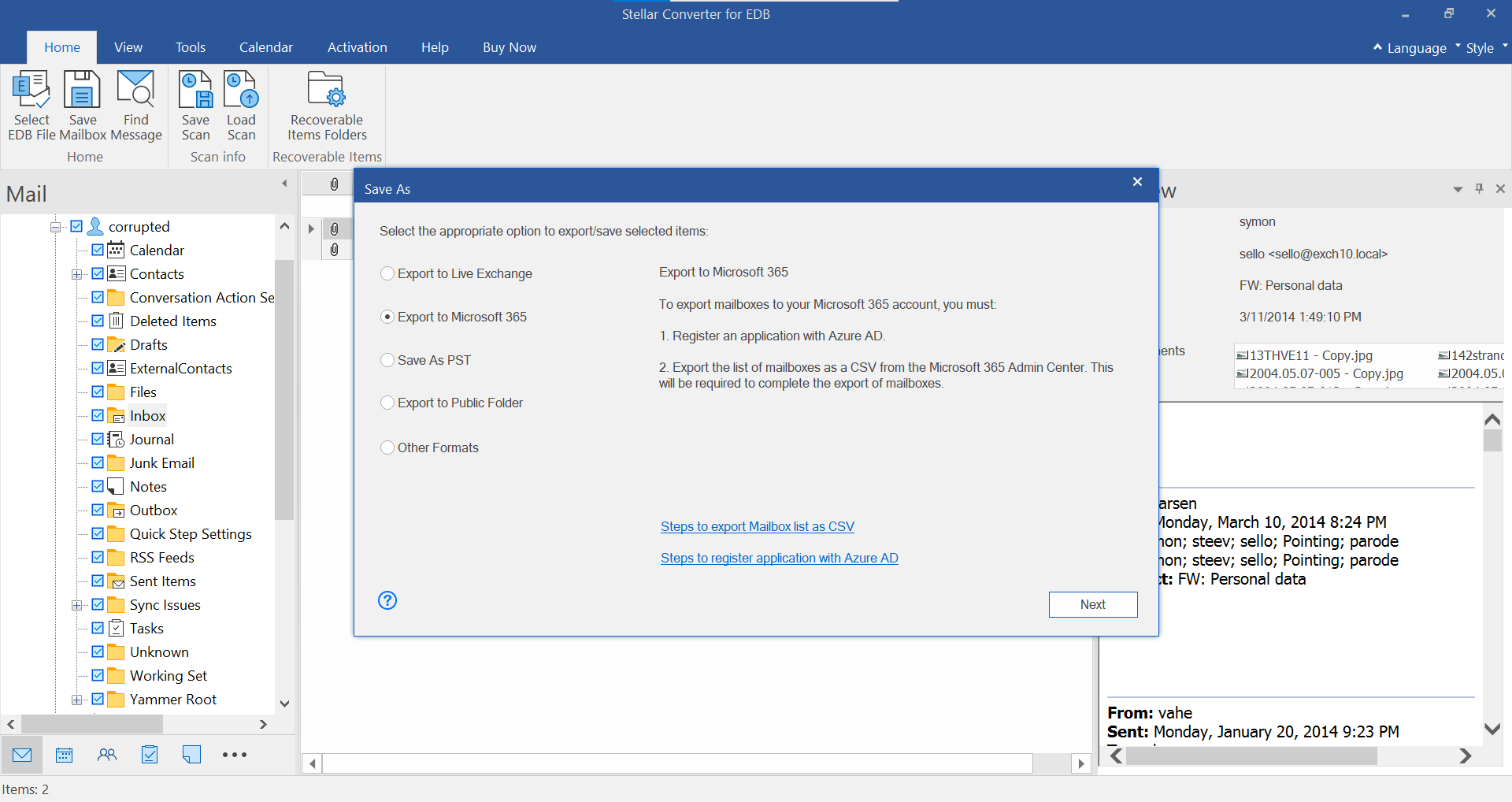
- Microsoft 365 Login Credentials dialog box opens. Enter Email Address, Application (Client) ID, Directory (Tenant) ID and Client Secret Value to export mailboxes to Microsoft 365. Click Next to continue.
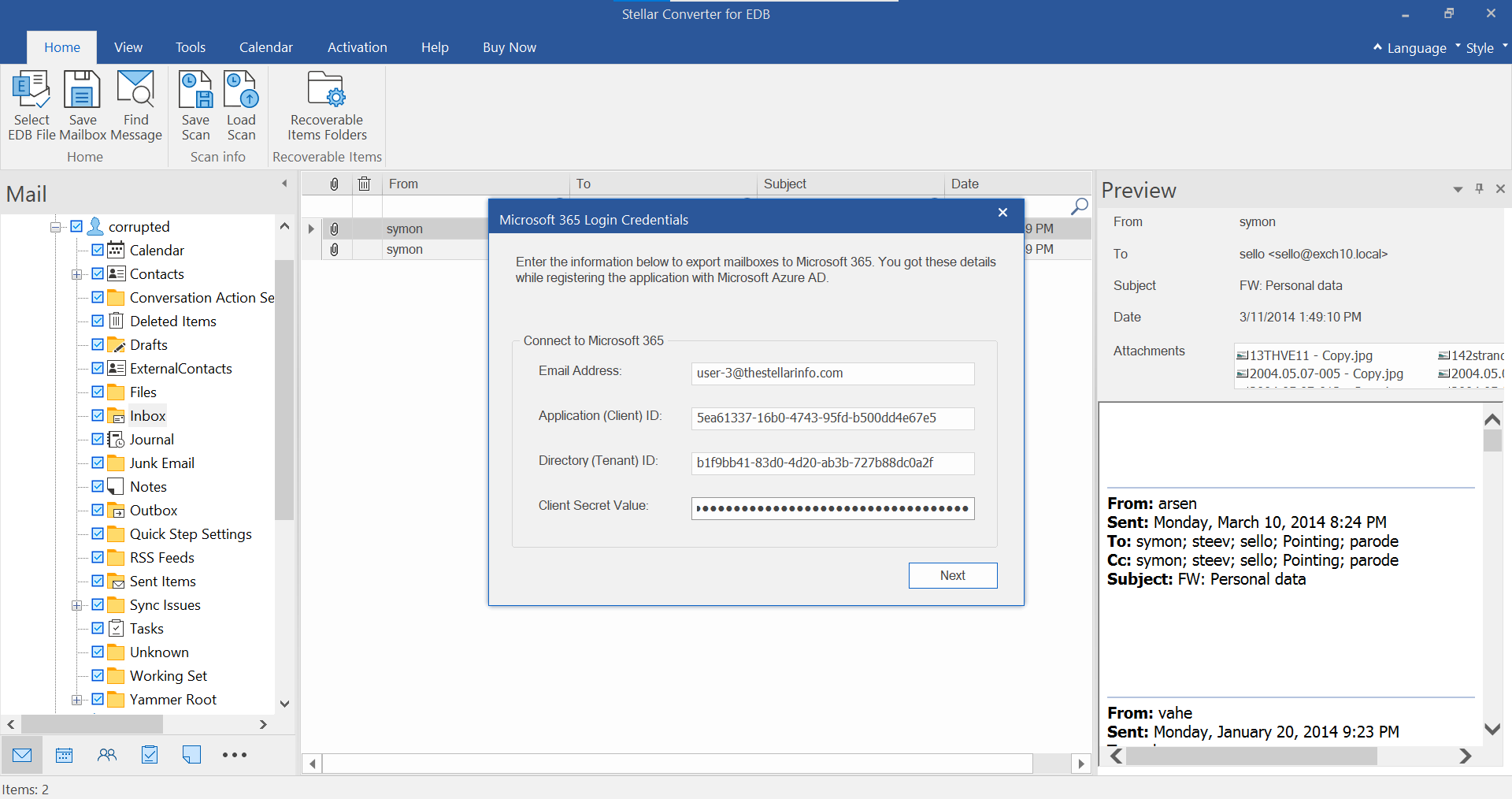
- The Load Mailbox List dialog box will appear. Click the Browse button to select the CSV file containing the list of mailbox users. Click OK.
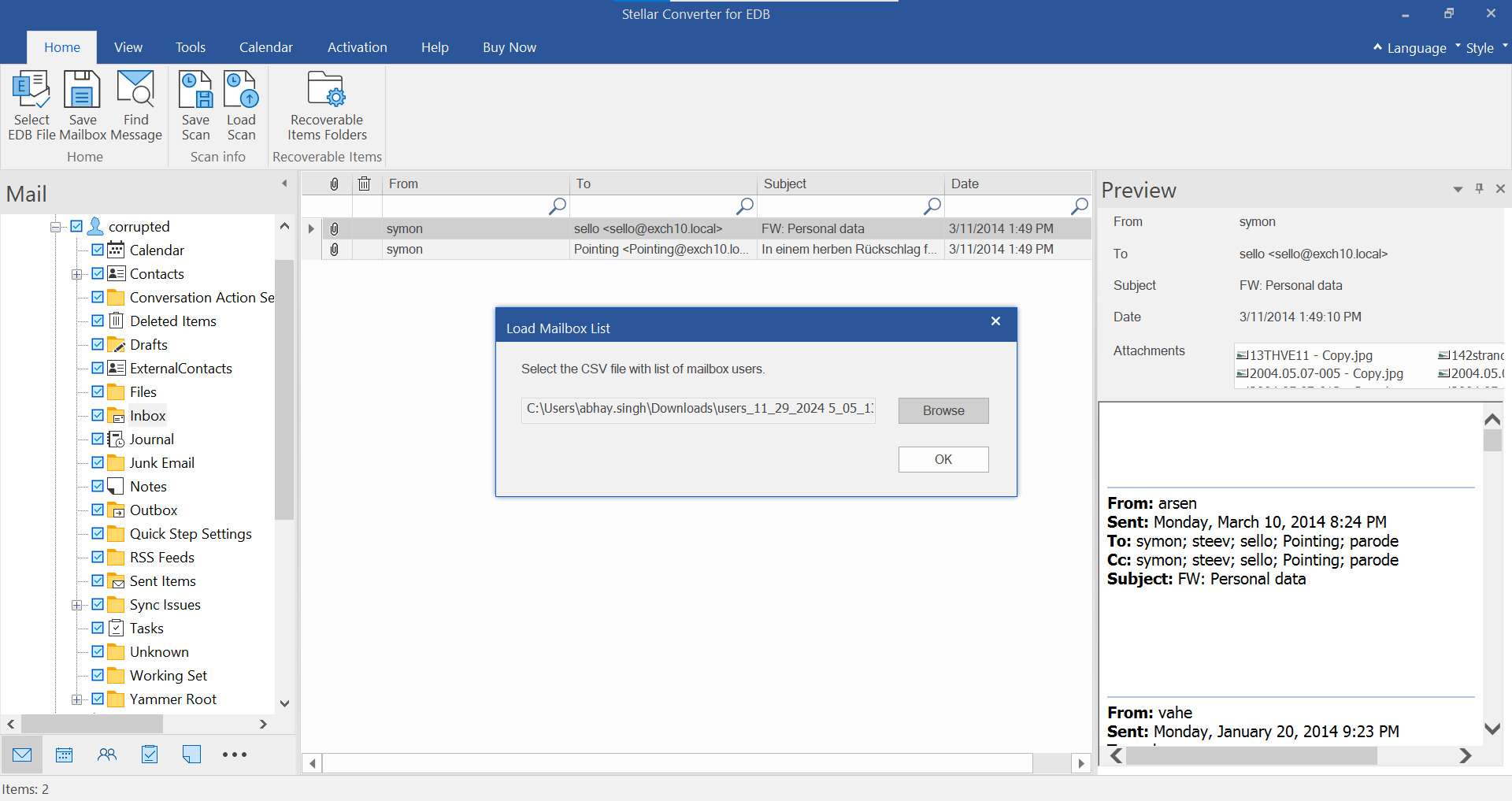
- A Map Mailbox screen will appear with the following three columns:
- Priority: To change or set mailbox export priority order. Helps export critical mailboxes first
- Mailbox from Your EDB (Source): Mailboxes available in converted EDB files.
- Exchange Server Mailbox (Destination): Mailboxes available in the Exchange Server database.
- Mailbox Mapping Status: Displays whether source mailbox is Mapped or Not Mapped with destination mailbox.
- Edit: Allows you to edit or change mailbox mapping.
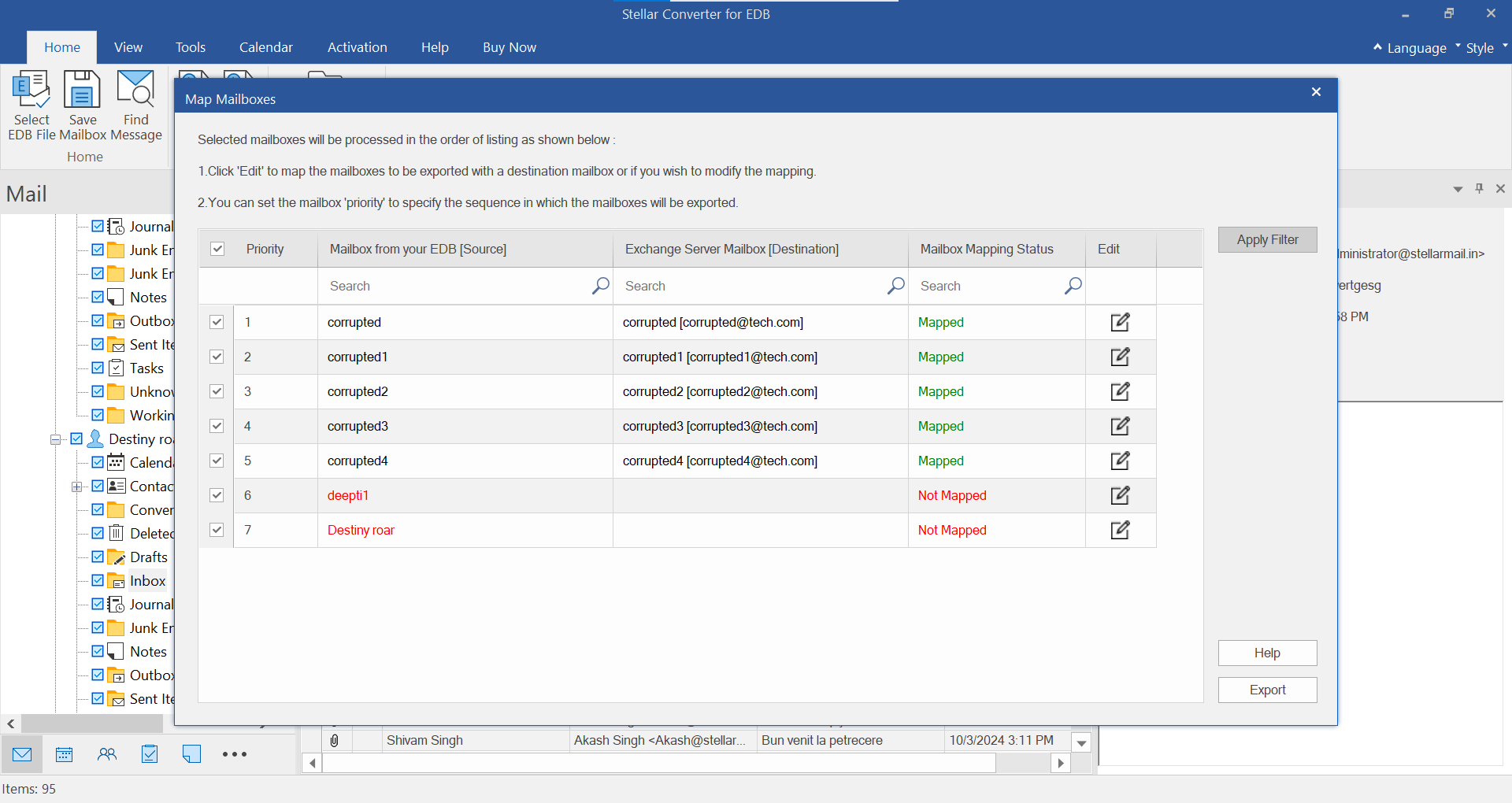
Although the software auto-maps mailboxes, it also provides option to edit mailbox mapping. You can click on the Edit icon to manually map or change source mailbox to destination mailbox mapping.
Note: You can use Apply Filter option to include the emails as per Date Range or exclude the emails based on email address. You can also exclude Junk emails and deleted mail items from being exported to Microsoft 365.
- After mapping mailboxes, click Export to export all selected mailboxes from the offline EDB to Microsoft 365.
- If mailboxes are not mapped, a message box will appear. Click ‘Map Mailboxes’ to go back and map mailboxes or click ‘Skip Mapping’ to continue.

- When you click Export, a Confirm Mailbox Export dialog box appears informing you that the export process, once started, cannot be aborted. Click Yes to proceed with the export process. Click No to cancel.

- In the Save dialog box, the software displays export progress.
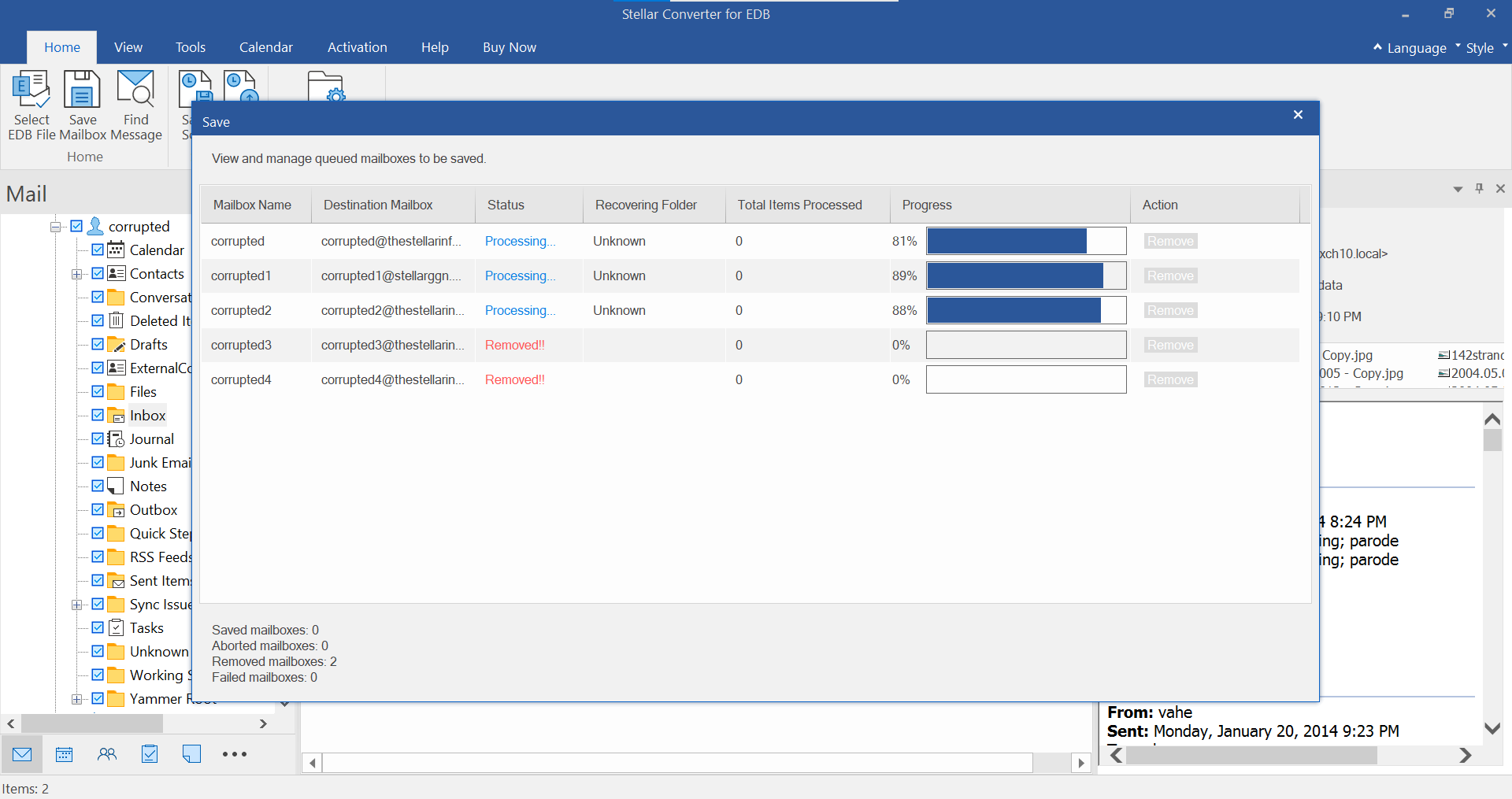
- Once the process of exporting the EDB file to Microsoft 365 completes, the software displays a Saving Complete message box. Click ‘OK’ to close it.
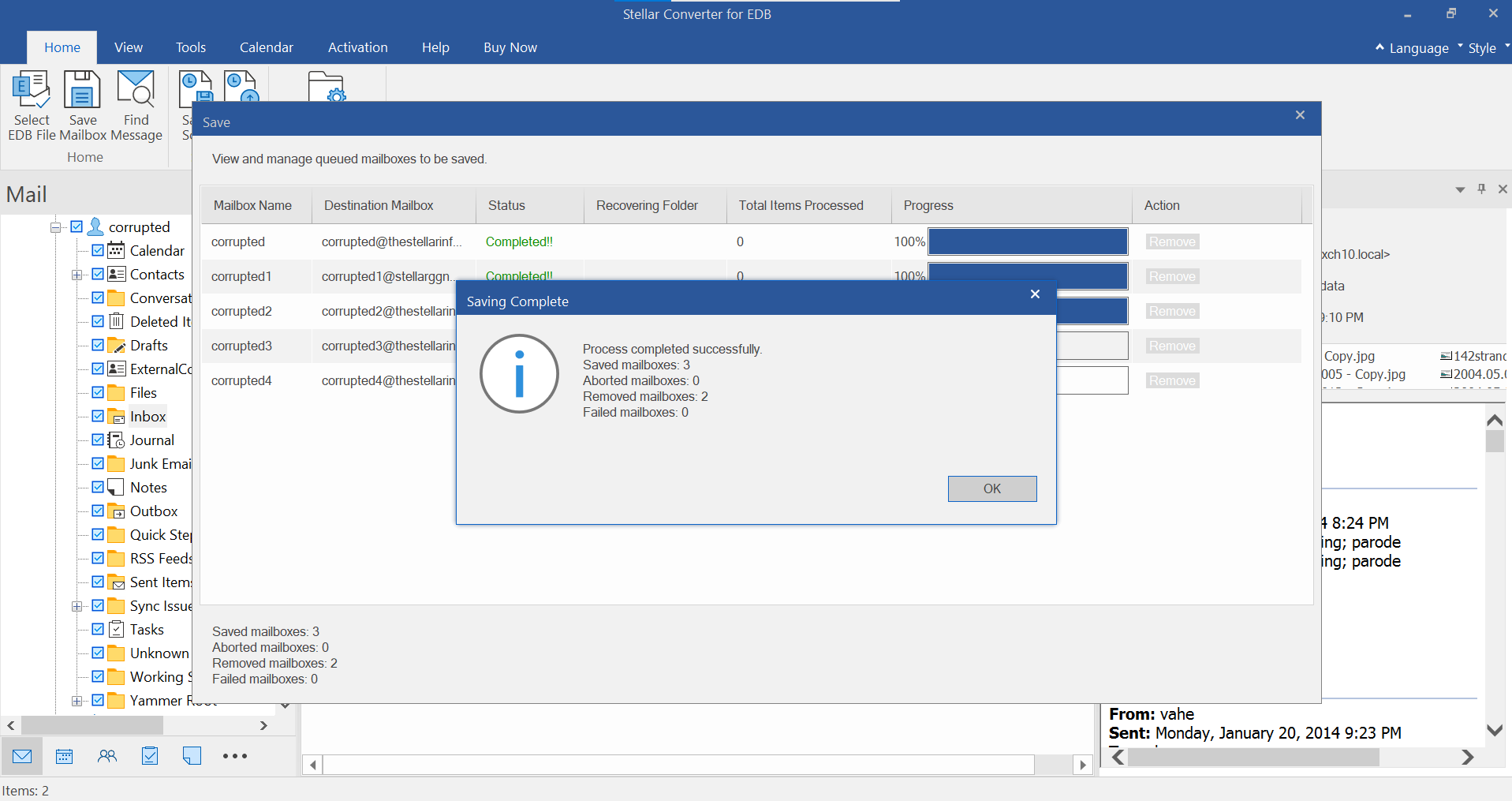
Now you can verify the exported mailboxes on the destination Microsoft 365.
To export single mailbox to Microsoft 365, follow these steps:
- Right click on a particular mailbox and then click ‘Export to Microsoft 365’ to proceed.

- Microsoft 365 Login Credentials dialog box opens. Enter Email Address, Application (Client) ID, Directory (Tenant) ID and Client Secret Value to export mailboxes to Microsoft 365. Click Next to continue.

- The process screen will appear, displaying the status of mailbox processing, mails of folder processing, and the number of mails processed.

- The Process Complete dialog box will appear, displaying the message Data exported successfully.










